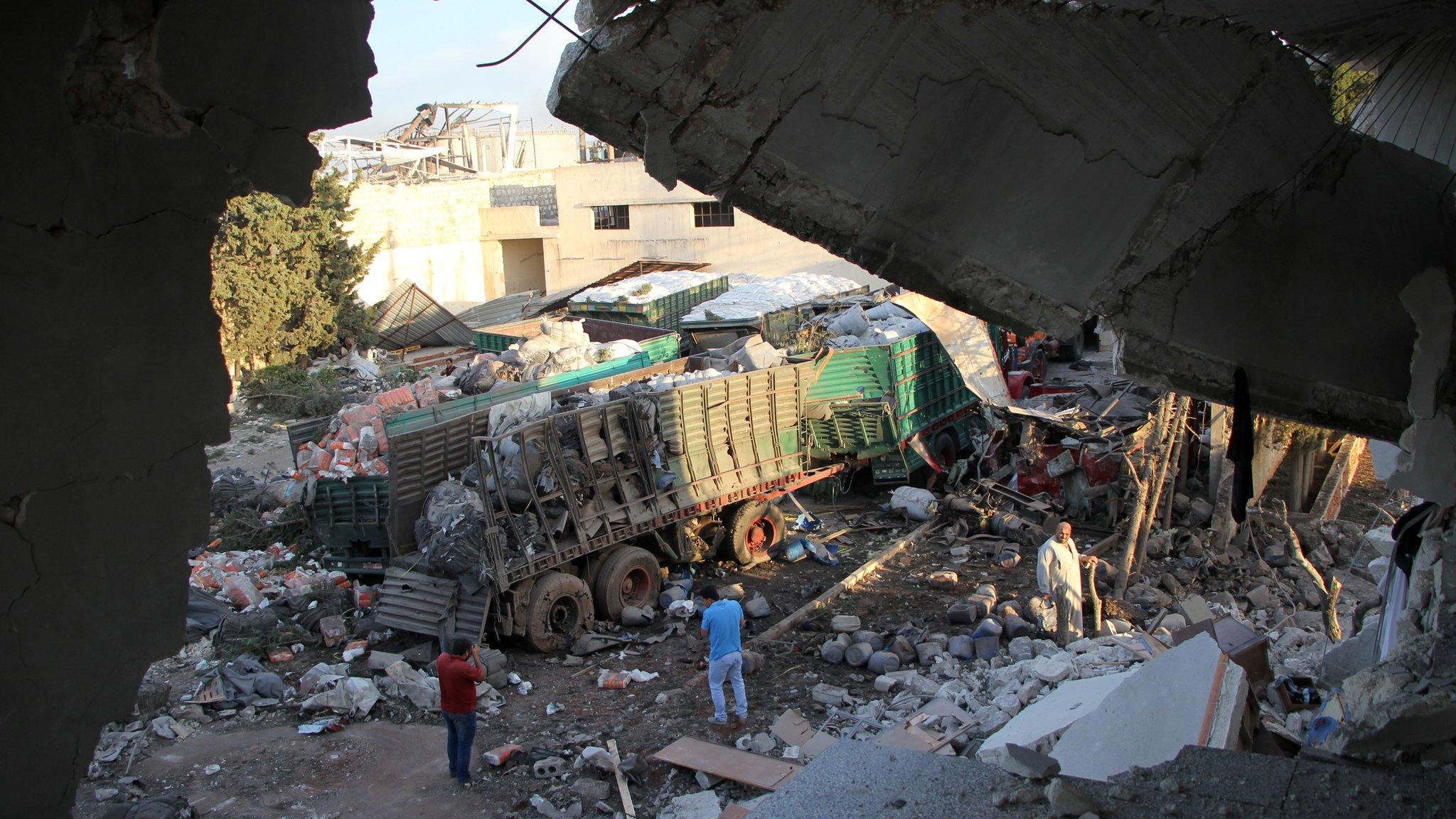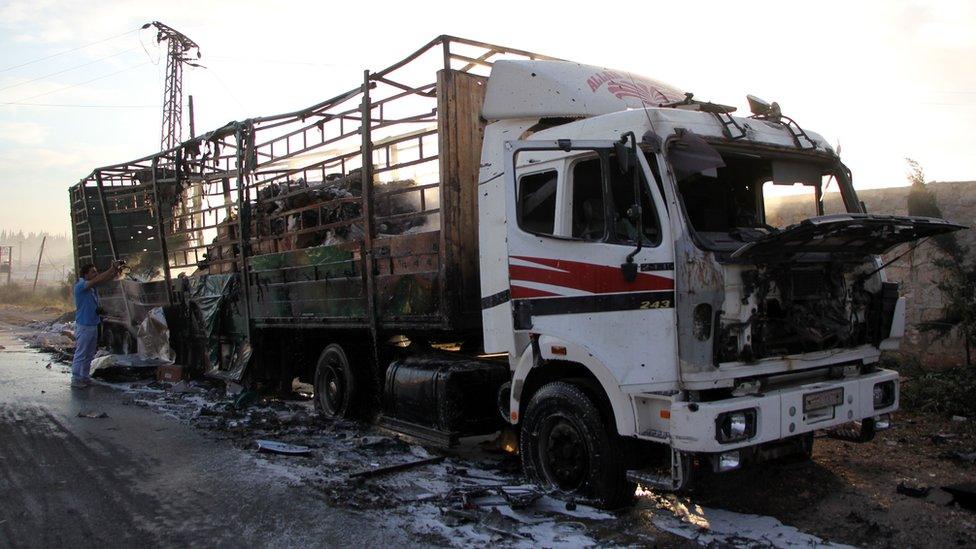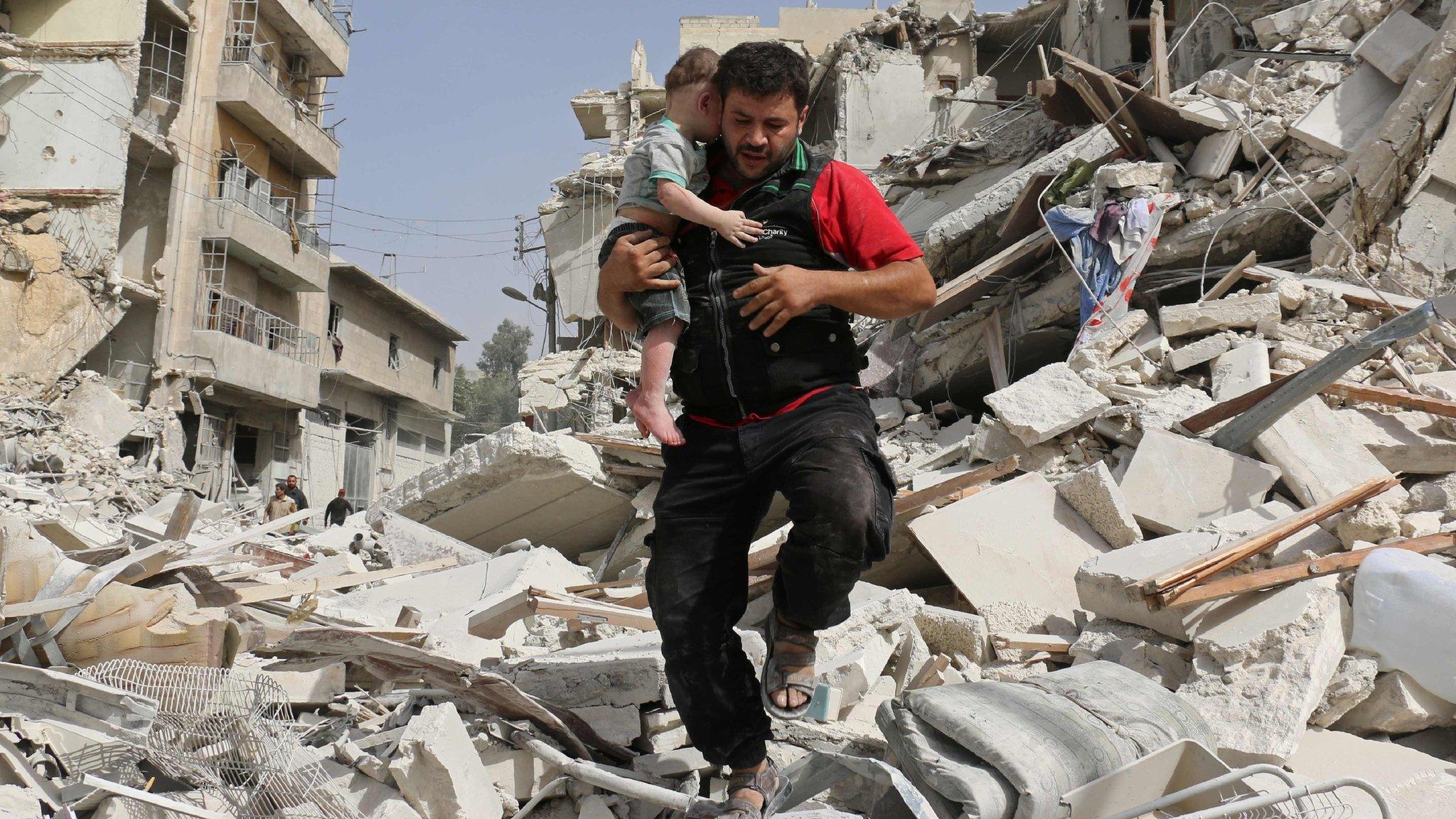Syria conflict: Why truce was doomed to fail
- Published

An aid convoy was hit on Monday, killing 20 civilians
While US Secretary of State John Kerry is not giving up on the idea of a ceasefire in Syria, it is very hard to see his efforts bearing fruit.
Few details of the deal agreed by the Russians and Americans have been released. There was indeed something of a decline in hostilities, though no comprehensive calm.
The ceasefire was supposed to open the way to aid deliveries in Syria, followed by the rolling out of a co-ordinated military campaign by Moscow and Washington against so-called Islamic State (IS) targets and other groups linked to al-Qaeda.
In practice the latest attacks on the aid convoy and hospital seem to have taken things back to square one. Indeed the cynicism of the attack on the convoy in particular is remarkable.
The Russians have shown drone footage of their monitoring of the convoy, the route and location of which were pre-announced. But what happened next is disputed.

The US holds Russia responsible for the attack on the aid convoy
The Americans are hinting strongly that the convoy was attacked from the air by a pair of Sukhoi Su-24 jets - either Russian or Syrian. It makes little difference to Washington, which holds Moscow responsible either way.
In contrast, the Russians deny any culpability; they say their aircraft were not in the area and that the destruction of the convoy was the result of action on the ground - the implication is from rebel forces.
Quite what purpose anyone had in destroying the convoy is unclear, other than to jeopardise the ceasefire. But the seeds of its collapse were there from the outset.
Firstly, the ceasefire was negotiated not between the warring parties on the ground but by two of their patrons - the US and Russia - who are both engaged in the conflict, in different ways and with very different goals.
The Syrian Government and the various rebel factions were not involved.
Secondly, neither the Russians nor the Americans were able to convince their allies to accept the deal. Moscow had the easier job, to convince the Assad regime, which is hugely dependent upon Russia.
The Americans were able to convince some of the rebel groups to back the deal - but many others did not. Indeed many of them have no particular relationship with the Americans.

Recent airstrikes in Aleppo have caused major setbacks to those seeking to deliver aid
Furthermore, the complex and untidy nature of the Syrian battlefield with multiple localised conflicts going on across the country, prosecuted by a variety of actors, made the idea of any ceasefire difficult from the outset.
The idea that the guns should fall silent in one war - between the Assad government and a variety of rebel groups - while the US and Russia put their foot on the accelerator in another battle against IS is a little bizarre.
Any hammering of IS would create local vacuums into which one or other actor, the government or the rebels, might step.
In any case many at the Pentagon (and probably one would imagine some inside the Russian Defence Ministry as well) were far from enthusiastic about the proposed joint military campaign against IS.
If there was insufficient trust at the outset, then the attack on the aid convoy and the recriminations between Washington and Moscow now, have only made matters worse.
The conflict seems to be heading for a brutal stalemate as the fighting continues. The Assad regime is too weak to retake all the areas of the country it has lost. The rebel opposition too weak to seriously challenge it beyond the areas it already holds.
The Kurds as well as the Turkish incursion into Syria add an additional level of complexity to the problem. And as mentioned above the continued assault on IS will change the strategic map in Syria whatever happens elsewhere.
- Published21 September 2016

- Published5 October 2016

- Published8 September 2016